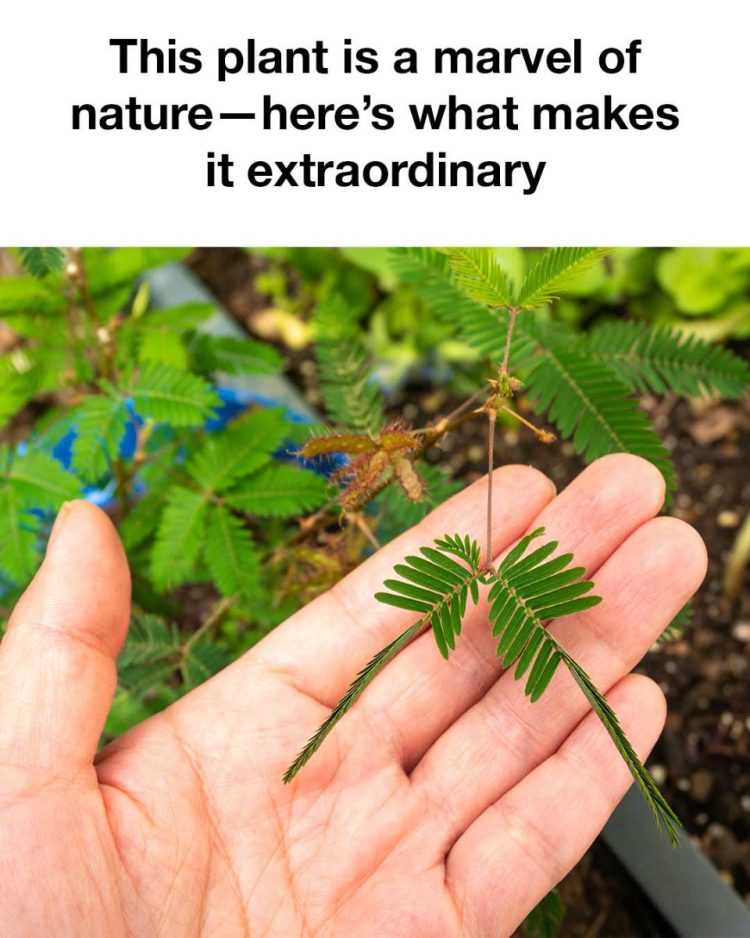ADVERTISEMENT
Mimosa pudica, often referred to as the ‘sensitive plant’ or ‘touch-me-not,’ is a fascinating species that has captured the curiosity of botanists and plant enthusiasts alike. This plant is renowned for its rapid movement in response to touch, a rare trait in the plant kingdom. Its ability to react to external stimuli has made it a subject of numerous scientific studies and a popular plant for educational purposes. Beyond its intriguing behavior, Mimosa pudica also holds cultural significance and potential health benefits, making it a true marvel of nature.
The Origins and Natural Habitat of Mimosa Pudica
Mimosa pudica is native to South and Central America but has spread to various tropical and subtropical regions around the world. It thrives in warm climates and is commonly found in disturbed areas such as roadsides, fields, and gardens. The plant prefers well-drained soils and can often be seen growing in sandy or loamy substrates. Its ability to adapt to different environments has contributed to its widespread distribution, although it is considered invasive in some regions.
Unique Characteristics That Make Mimosa Pudica Extraordinary
What sets Mimosa pudica apart from other plants is its rapid leaf movement in response to touch or other stimuli. This phenomenon, known as thigmonasty, is not only a defense mechanism against herbivores but also a unique feature that fascinates scientists and laypeople alike. Additionally, the plant has compound leaves that fold inward and droop when stimulated, which is a rare trait among plants. Its pink, fluffy flowers and fern-like leaves add to its aesthetic appeal, making it a popular choice for ornamental gardens.
The Fascinating Mechanism of Leaf Movement
The leaf movement of Mimosa pudica is a result of changes in turgor pressure within the plant’s cells. When touched, the plant releases ions that cause water to flow out of the cells in the pulvini, the swollen bases of the leaflets. This loss of water causes the cells to collapse, leading to the folding of the leaves. The process is reversible, and the leaves reopen after a few minutes once the stimulus is removed. This rapid movement is an evolutionary adaptation that helps deter herbivores and protect the plant from harm.
Health Benefits Associated with Mimosa Pudica
Mimosa pudica has been used in traditional medicine for centuries, particularly in Ayurvedic practices. It is believed to have anti-inflammatory, antimicrobial, and wound-healing properties. The plant is also used to treat ailments such as diarrhea, dysentery, and insomnia. Recent studies have explored its potential as an antioxidant and its ability to support gut health. However, more research is needed to fully understand its medicinal properties and efficacy.
Traditional and Modern Uses of Mimosa Pudica
Traditionally, Mimosa pudica has been used in various cultures for its medicinal properties. In addition to its use in treating digestive issues and skin conditions, it has been employed as a sedative and to promote relaxation. In modern times, the plant is often used in scientific research to study plant movement and behavior. Its unique characteristics make it an excellent educational tool for teaching botany and plant physiology.
Cultivating and Caring for Mimosa Pudica
Growing Mimosa pudica can be a rewarding experience for plant enthusiasts. It requires a warm, humid environment and thrives in well-drained soil with regular watering. The plant prefers bright, indirect sunlight and should be protected from extreme temperatures. Mimosa pudica can be grown from seeds or cuttings, and it is important to avoid overwatering to prevent root rot. With proper care, this plant can be a delightful addition to any indoor or outdoor garden.
Environmental Impact and Ecological Role of Mimosa Pudica
While Mimosa pudica is admired for its unique characteristics, it can also be invasive in certain regions, outcompeting native vegetation and disrupting local ecosystems. Its ability to fix nitrogen in the soil can benefit other plants, but its aggressive growth may require management in non-native areas. Despite these challenges, Mimosa pudica plays a role in its native habitats by providing food and shelter for various insects and animals.
Conclusion: The Remarkable Nature of Mimosa Pudica
Mimosa pudica is truly a marvel of nature, captivating those who encounter it with its extraordinary ability to move and its diverse uses. From its intriguing thigmonastic movements to its potential health benefits and ecological roles, this plant continues to inspire curiosity and admiration. Whether appreciated for its beauty, studied for its unique behavior, or utilized for its medicinal properties, Mimosa pudica remains a remarkable example of the wonders of the natural world.
For Complete Cooking STEPS Please Head On Over To Next Page Or Open button (>) and don’t forget to SHARE with your Facebook friends
ADVERTISEMENT
